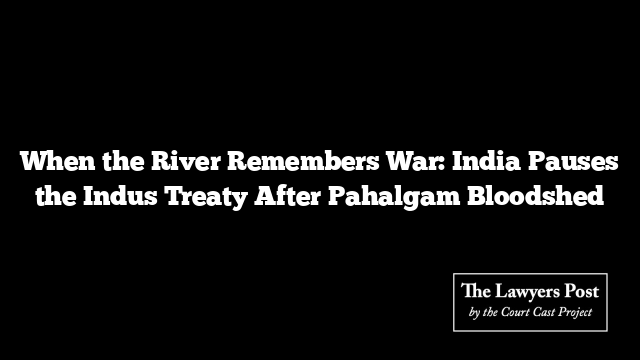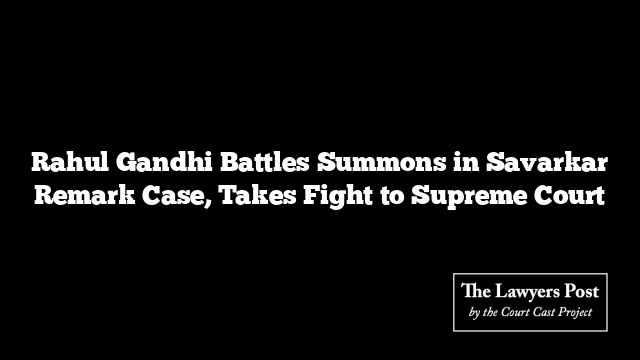For 65 years, a quiet current of diplomacy ran beneath the turbulence of India-Pakistan relations — a riverine agreement that defied wars, border skirmishes, and broken summits. But after the brutal killing of 26 tourists in Jammu and Kashmir’s Pahalgam, that current has finally met resistance.
On April 23, in a move that jolted decades of foreign policy orthodoxy, India hit pause on the Indus Waters Treaty — a landmark agreement that had, until now, been insulated from terror and turmoil. The government accused Pakistan of fostering a pattern of cross-border terror and argued that the atmosphere of perpetual violence was choking India’s ability to utilize its rightful share of the river waters.
Islamabad didn’t wait long to thunder back. Prime Minister Shehbaz Sharif’s office warned that any attempt to block or alter water flow would be seen as “an Act of War.”
Suddenly, the Indus Waters Treaty — signed in 1960, co-authored by Jawaharlal Nehru, General Ayub Khan, and brokered by the World Bank — isn’t just a dusty document in a diplomatic archive. It’s front and center in a geopolitical flashpoint.
What is the Indus Waters Treaty?
Born out of post-Partition necessity and stitched together by international arbitration, the treaty governs the allocation of six rivers: Indus, Jhelum, Chenab, Ravi, Beas, and Sutlej. It gives India full control over the eastern rivers (Ravi, Beas, Sutlej) and leaves the western ones (Indus, Jhelum, Chenab) to Pakistan — albeit with certain permissions for India to use them in limited, non-consumptive ways such as hydropower, irrigation, and navigation.
Structured with 12 articles and eight annexures, it’s a meticulous blueprint for peace-by-water.
Why It Matters So Much to Pakistan
Pakistan’s very veins run with Indus water. Nearly 80% of its cultivated land depends on the Indus system. Agriculture isn’t just an economic engine—it’s a lifeline, employing half the country’s labor force and serving as a major source of foreign exchange.
Its megacities — Lahore, Karachi, Multan — drink from this system. Its power projects live off it. In 1961, a senior World Bank official bluntly predicted that without these waters, Pakistan would become a desert. The stakes haven’t changed.
Can India Really Cut the Flow?
Not immediately. Despite having almost fully tapped its share from the eastern rivers, India lacks the current infrastructure to effectively divert or utilize water from the western trio. That requires time — and concrete.
Projects like the Ratle (850 MW), Pakal Dul (1,000 MW), Kiru (624 MW), and Kwar (540 MW) hydropower plants on the Chenab are in the pipeline, but full capacity remains a work-in-progress.
So while the tap hasn’t turned off yet, India’s hand is very much on the valve.
How Do Disputes Get Resolved?
The treaty was designed with layers of diplomatic cushioning.
First comes the Indus Waters Commission — a two-person body (one representative from each side) that handles routine matters. If talks stall, the issue can be elevated to a “neutral expert” appointed through the World Bank. Still unresolved? The next stop is a Court of Arbitration, with seven members — two each from India and Pakistan, and three neutral “umpires” who can be picked by agreement, or, if necessary, by drawing lots.
It’s a slow, legalistic process — but one that was supposed to outlast politics and prevent river wars.
The Legal Twilight Zone
The treaty never imagined a day when one side might simply suspend it. There’s no exit clause, no provision for withdrawal. India hasn’t declared a formal exit — only a suspension. That leaves the agreement in murky legal waters, raising questions about whether “abeyance” is even a valid status under the treaty’s own rules.
As the legal and diplomatic machinery begins to hum in the background, one thing is clear: the river that once defied war is now pulled into its shadow.
The Indus Waters Treaty, hailed as a rare jewel of cross-border cooperation, now faces an uncertain tide. And it all began — not in a courtroom, not at a summit table — but on a blood-stained road in Pahalgam.





